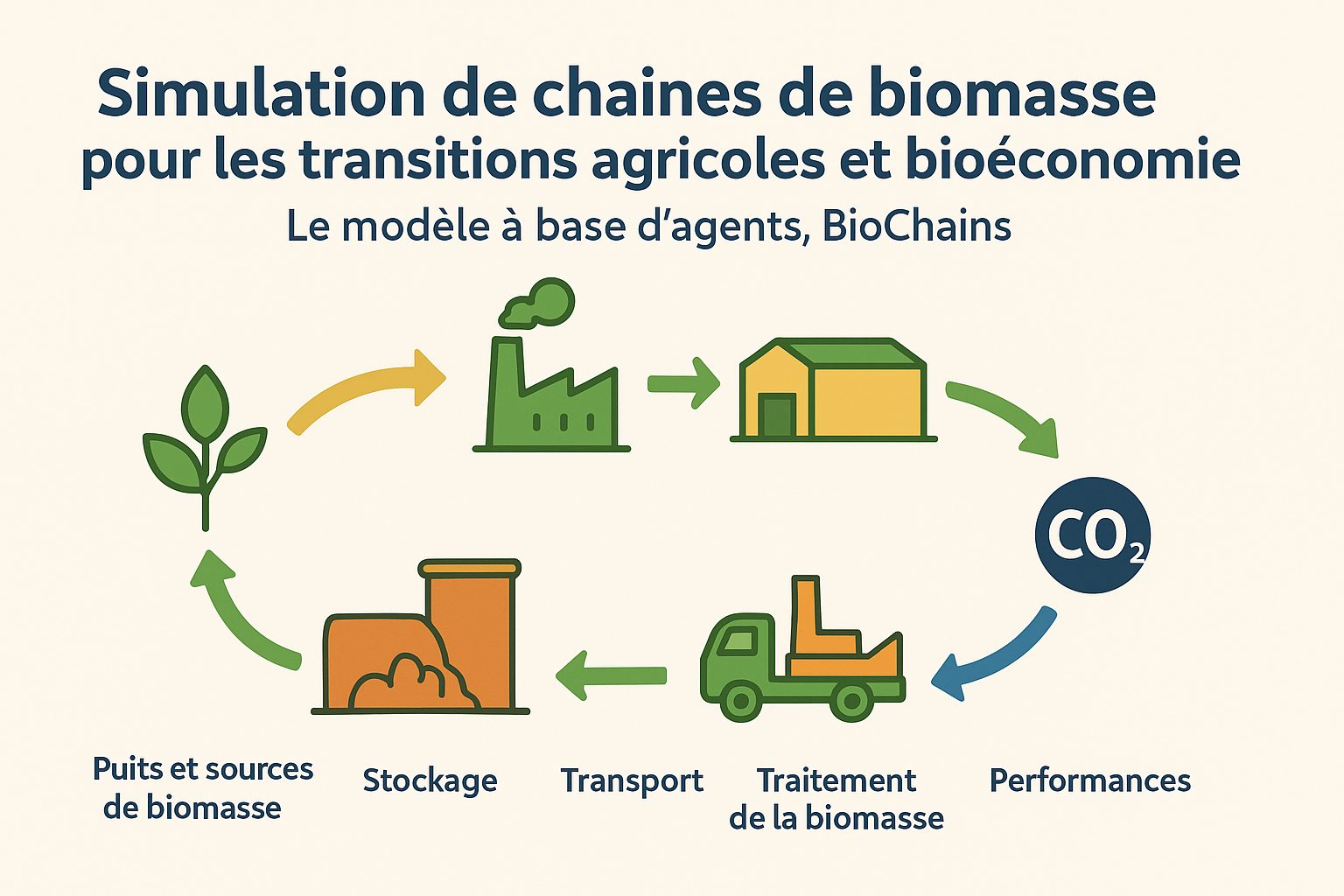Hadrien Delattre (1) , Jean-Christophe Soulie (1) , Jean Villerd (1) , Olivier Therond (2)
1 LAE – Laboratoire Agronomie et Environnement
2 LAE-Colmar – Laboratoire Agronomie et Environnement – Antenne Colmar
https://hal.science/hal-05325353v1
The agent-based model BioChains aimed at modelling and simulating the biomass flows between production and processing plants to support the design of sustainable territorial bioeconomic systems (Wohlfahrt et al. 2019). Starting from concepts and formalisms of the existing UPUTUC model (Soulié et al. 2017), biomasses are represented as ” pools ”, defined by their volume and type, transiting through multiple production, processing and consumption ”units”. In addition to their type (e.g: Faba beans, corn silage, pig slurry etc), each biomass pool is characterised by its age and physical characteristics (e.g.: dry matter, nitrogen content, phosphorus content etc), which may vary on a daily basis, due to phenomena such as degradation within storage units. BioChains has been designed to represent five layers of phenomena regarding the prospects of biomass pools in a territory; – Wells and sources of biomass: where are produced and consumed biomass pools? And at which rate? – Storage: what are the maximum capacities and storage conditions offered by the units of the territory? How do the physical characteristics of biomass pools change between the time they are stored and the time they are retrieved? – Transportation: how are biomass pools moved from one unit to another? How can ex- changes between units be assured, depending on the characteristics of freight companies’ fleets? – Processing of biomass: What biomass pools are needed and processed by biomass processing plants of the territory? – Performances: how much greenhouse gases are emitted by composting or degradation during storage of a given quantity of biomass? How much bioproducts (e.g.: biogas, biomaterials) are produced through the different processing plants? How the transportation traffic in increase due to the development of the bioeconomy? BioChains allows integrating multiple coarse- or fine-grained bioprocess models. The bio- processes currently implemented are anaerobic digestion (through the SysMetha model) and household composting. An industrial composting platform model and a bioplastic production plant model are also underway. In a more general manner, the BioChains model has been designed as a framework into which new bioprocesses can easily be described and communicate between each other through generic interfaces. The BioChains module provide its users with building blocks allowing to model and simulate multiple scenarios of biomass chain organisations, like linear vs. cascading and circular ones, thus making it possible to assess their respective environmental and economic performances. Being powered by the GAMA platform, the BioChains module is designed to be pluggable into the MAELIA platform (Misslin et al., 2021) to simulate interactions between agricultural, hydrological and biomass pools dynamics. BioChains is capable to interact with MAELIA agents as well as to function as a « standalone » model. This coupling possibility adds the ability to test bioeconomy scenarios to MAELIA’s Integrated Assessment Modelling approach (for example; which feasibility for a specific transformation unit layout on a territory? What scaling for the logistics around the upcycling of a given organic waste product?).

![Logo-INRAE_Transparent-[Blanc]](https://a2f.univ-lorraine.fr//wp-content/uploads/2023/07/logo-inrae_transparent-blanc.png)


